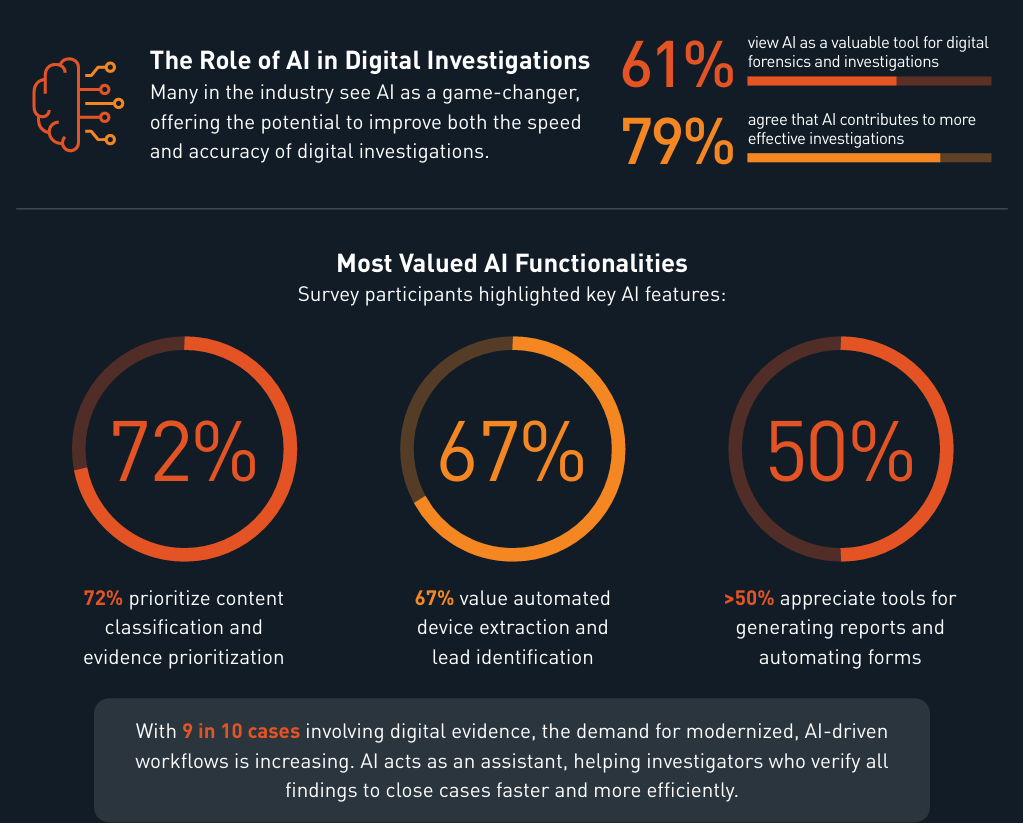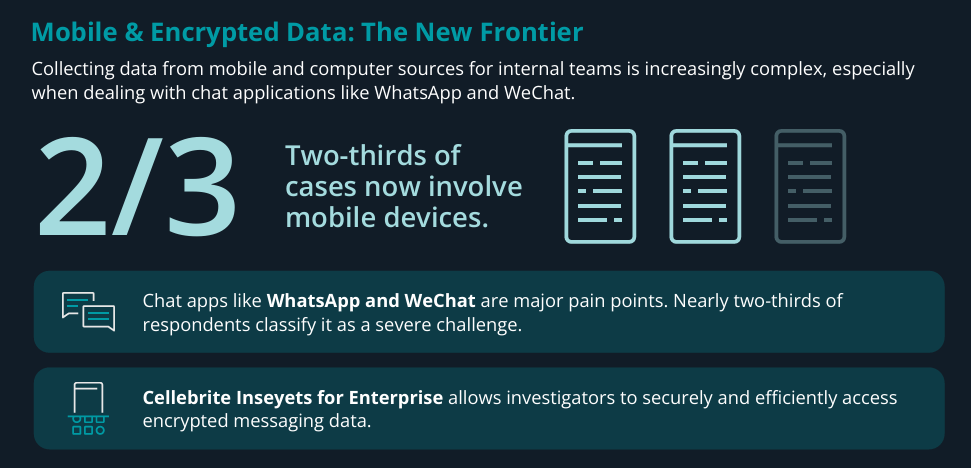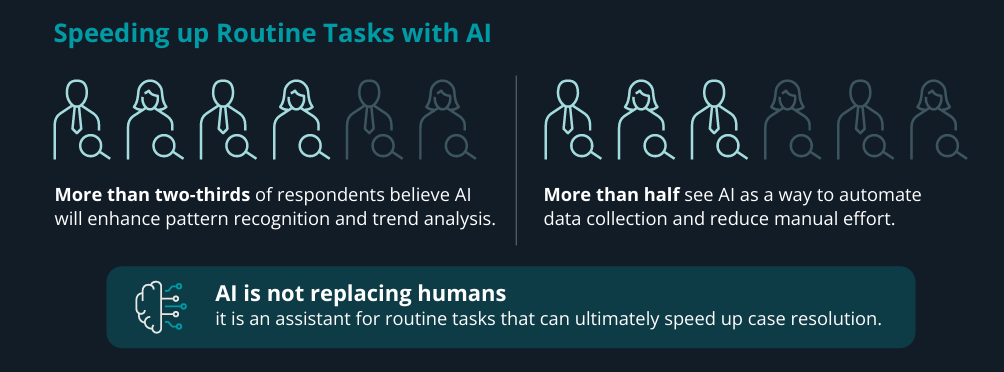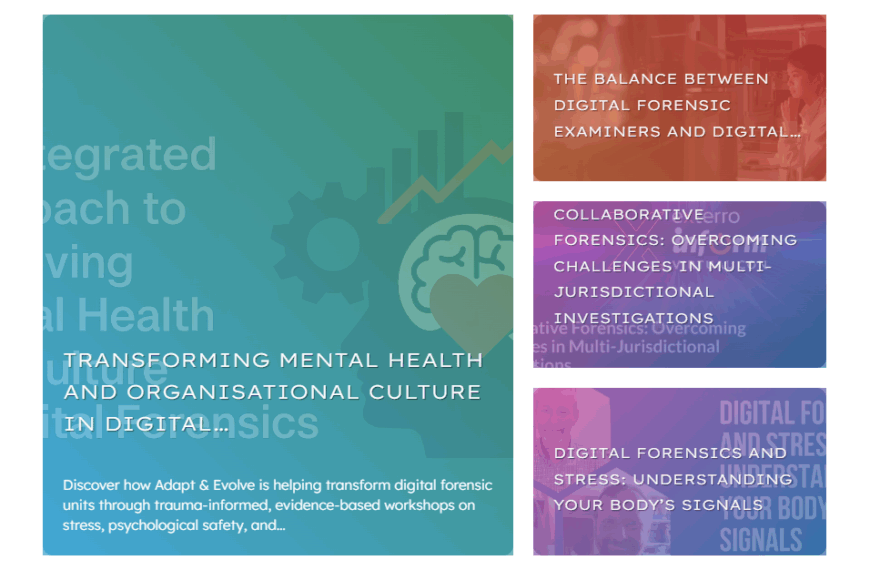Cellebrite’s 2026 Industry Trends Survey is Live
Nearly every modern investigation has a digital element. Right now, professionals in the digital forensics space are dealing with more data and devices than ever before, stretching them to the max and ultimately, slowing case resolution.
Examiners now report an average backlog of three to four weeks and more than a third of the respondents to Cellebrite’s annual Industry Trends Survey say they do not have enough time to fully review the data.
While the digital forensics field is constantly and quickly changing, there is one thing we know for certain: the amount of data and devices will only continue to grow. The question now is what can be done to help professionals in the field keep up?
Every year Cellebrite creates a comprehensive list of questions and poses them to public safety entities in the local, state and federal space, as well as to private sector enterprises. The responses help us get a pulse of the industry, better understand the challenges and gauge any changes happening in the digital investigations field.
Survey Insights Shape Industry Solutions
Participants from more than 100 countries, ranging from users to supervisors to prosecutors, took part in the public sector’s 2025 Industry Trends Survey. Their unique viewpoints gave us valuable information about a variety of topics, from the importance of digital evidence in the courtroom, to using AI as an assistant and managing the growing amount of data via the Cloud.
Survey responses confirmed for us that digital evidence plays a big role in the courtroom. Juries have now come to expect it as part of what they will review in the case. Our survey revealed that 98% of prosecutors consider digital evidence pivotal to securing convictions. More than half of them told us they believe this evidence type is more important than DNA.

Considering the importance of digital evidence, we want to focus on innovating our solutions for the future. Our goal is to empower users not only with what they need today, but what they will need a few years down the road. Of those who responded to our survey in the public sector, nearly 40% told us they’re open to using cloud technologies for evidence storage and sharing. The reason? The cloud offers both scalability and security advantages.
On the flip side, we also found that 60% of investigators are still using USB sticks for sharing data, even though it is widely recognized as an inefficient avenue, inviting security risks which could compromise the chain of custody.
One respondent left this comment in the survey:
“Cloud-based storage/sharing is the only practical path I see moving forward in DFIR within [law enforcement] LE. The amount of data is just too large, and traditional media is not a viable option to store/transfer [data].”
Responses like this are incredibly valuable as we work on the development of our solutions. The insights not only help us prioritize what’s needed, but they also help us determine the way in which we should shape them to best fit the needs of the industry.
Agency managers are taking note of the changes happening in the field and report a 76% growth in the role of digital data in devices in the past three years. More than half recognize the need for improvement of data management and rated their current strategy as mediocre or poor.
And then there is the topic of AI. 80% of survey respondents said they believe it can make investigations more efficient since it can automate routine tasks. Making the most of their time is a priority for investigators, many of whom reported spending an average of 69 hours per case reviewing multiple devices.

The Impact of Digital Forensics in the Private Sector
The explosion of digital data isn’t a trend happening only in the public sector. Modern investigations in the private sector now involve much more data than merely emails and documents. Examiners and investigators must also gather data from virtual meeting transcripts, AI-generated summaries and enterprise chat platforms. Since mobile devices are now involved in two-thirds of cases, data from encrypted messaging apps like WhatsApp and WeChat is also involved and gathering that can be tricky.

Keeping all of that data in mind, it will come as no surprise that the private sector’s survey showed eDiscovery remaining as the top priority. Investigators need options that give them accuracy, speed and efficiency.
AI-powered solutions are no longer a luxury; they are a necessity. Adoption of AI in the private sector is still in the early stages, yet respondents clearly see its potential. More than two-thirds of respondents said AI can enhance data analysis to help identify patterns and trends more efficiently. More than half said the technology will help reduce manual effort in the collection process. It will never be about replacing human investigators. Rather, it’s about giving them an assistant to work smarter and faster—always with a human verifying the findings.

Top priorities for organizations include eDiscovery, with intellectual property theft following closely behind, according to our survey. While there has not been a significant change year over year in the frequency of these cases, the data involved is more complex. Investigators need solutions that can analyze both structured and unstructured data to detect anomalies and prevent breaches before they escalate. All of this information tells us an important story about the industry’s needs, and we look forward to this year’s findings.
Let Your Voice Be Heard
The 2026 Industry Trends Survey is live now and will remain open for a little more than a month. In the private sector, this will be the fourth edition of the survey, and it’ll be the seventh edition in the public sector. This is an ongoing, proactive effort from Cellebrite, and we are grateful for those who take a few minutes to weigh in on what is happening in the digital forensics and investigations industry. It helps us help you.
Please join us in helping to shape the future of this industry and take our survey today!







